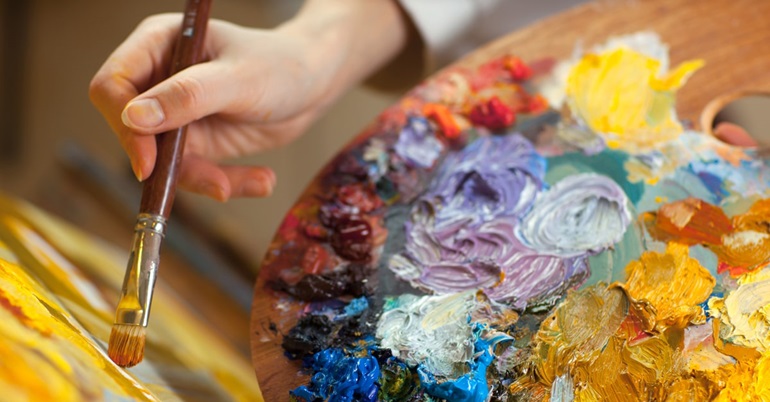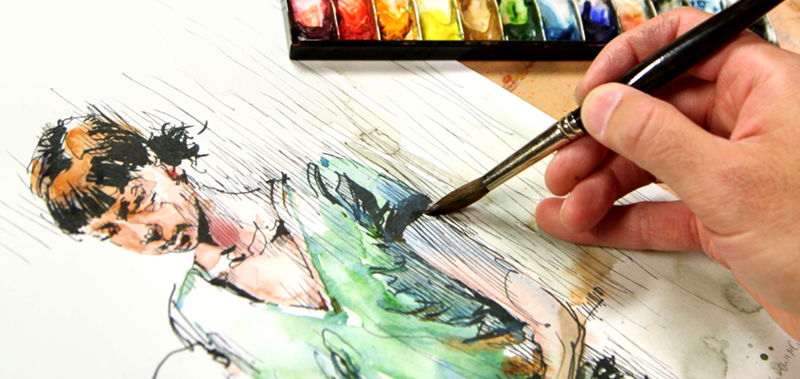The Complete Beginner’s Guide to Oil Painting
Rembrandt, Vincent Van Gogh, Leonardo da Vinci, and Claude Monet are some of the world’s well-known painters who used oil paints to produce their most recognised pieces. However, you don’t need to be a master of the Renaissance or a famous Impressionist to start creating the unmatched adaptability, enduring colours, and classic beauty of oil paintings.
You don’t need formal instruction, such as painting classes and courses, too; you can begin oil painting in your home with only a few basic supplies and a little creativity. Whether you’re just starting to paint or have been creating art for some time now and want to unleash your inner Rembrandt, here’s everything you need to know to paint with oils.
Is Oil Paint Easy?

First-time oil painting can seem intimidating and challenging, especially if you’ve never painted or are used to acrylics or other similar mediums. That’s how most artists feel when they start. We’ve all probably heard about the difficulties in handling oil paint, but what about we acknowledge how simple it is?
The ease of blending when painting with oil paints is one of its key benefits. Oil paints’ creamy consistency and lengthy drying time allow the flexibility to work with the colours on the canvas, combining tones to produce gentle gradients and seamless transitions.
Another significant benefit for beginner painters is that oil paints have many expressive options, especially regarding texture and glaze methods. You can easily create complex textures with oil paints, and they have a thick consistency that enables you to apply layers to any artwork while it’s still wet, giving it depth and dimension.
Lastly, we all make mistakes as an inevitable part of the creative process, especially at the beginning of our artistic journey. The good news is that oil paints are an incredibly forgiving medium that allows for smooth corrections of your work while in progress.
What Is Used to Make Oil Paintings?
Another huge reason that many beginner artists are afraid to start oil painting is the large variety of supplies available. A beginner artist may wonder how many paint tubes and what colours to buy. What sort of brushes must they purchase? Does it require linseed oil? And how about the canvas? Here are all the essential supplies for oil painting you need to start creating your unique masterpieces.
Paints
You can paint without paints, so oil paints are the most crucial item in your oil painting gear. You can start your collection by buying a paint set stocked with at least eight tubes of colour. Look for water-soluble medium to heavy-bodied paints that dry to a satin finish.
Another way to build an effective palette is to stock all fundamental colours one tube by one. While you may spend more money on oil paint at first, this method is more cost-saving in the long run, as tubes are larger, and you can use them longer. Although you won’t need every colour on the market, it’s crucial to have both warm and cold versions of each colour in your palette. White, yellow, terracotta or English red, phthalo green, ultramarine blue, burnt amber, and Mars or ivory black are excellent hues for your starter pack.
The Importance of Using High-quality Paints
Even though you’re a beginner, you shouldn’t use low-quality colours, as it can lead to inadequate paint performance. When using paint of lesser quality, it can be harder for you to cover the canvas. Also, there can be spots where it shows through or streaks. And you’ll never know if the issue lies with you or your approach. High-quality paint can help you remove any possibility of misunderstanding. While this paint type won’t necessarily advance your artistic abilities, it won’t hinder you.
Water Mixable vs Regular Oil Paints
You can’t thin, mix, or blend regular oil paint with water because it contains oil – you must use a solvent like turpentine in its place. However, that’s not the case with water-mixable paints. They contain an emulsifier, a chemical that makes paint that facilitates blending water and oil into a stable composition.
The end product is an oil-based paint that you can blend without using a harsh solvent. Alternatively, you can mix the water directly into the oil paint with your brush after dipping it in. Any painter may now experience the advantages of oil paint without the need to buy an extra solvent, thanks to water-mixable oil paint.
Brushes

We can broadly classify paintbrushes into bristle and soft hair, available in synthetic and natural hair. There are numerous forms of brushes. A hair cylinder that typically ends in a point is a characteristic of rounds. Flat brushes with a rounded tip are called filberts. Sharp-cornered flat brushes are called flats.
Smooth strokes and delicate marks are possible using soft-hair brushes from synthetic fibres, sables, squirrels, or oxen. Bristle brushes are used for scrubbing in colour, fast blocking in underpainting, or adding texture to a composition. In addition to their utility for applying thick paint, watercolourists also employ them for occasionally removing pigment from a surface.
Canvases
When selecting the correct canvas, consider your budget and the texture you want for the composition. The most common materials used to make canvas are cotton or linen fibres. Portrait linen is highly polished and pricey, while cotton duck is less expensive and has a more enhanced texture.
You can buy canvas pre-stretched over a frame or in a roll. It’s available for purchase unprimed or primed with gesso. Without priming the canvas, the paint will seep into surrounding regions, weakening the canvas’s archival quality. Most artists stretch the canvas themselves, saving money for other materials or tools.
Palette and Palette Knife
You’ll require a palette to mix your oil paints once you have them. It is unquestionably a necessity when it comes to supplies for oil painting. As a tangible object, a primed wood panel, glass, or wax paper might serve as a mixing palette. Palette paper pads appropriate for oil paint are available in most art stores.
Palette knives are another tool in the essential supplies for oil painting artists frequently use to manipulate paint on a surface, sculpt paint edges, create huge, flat planes of thick paint, and apply a lot of colour for highlights. You can also use a palette knife to blend colours on the palette.

